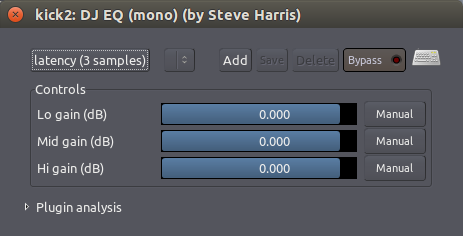You can download and install plug-ins or libraries to add extra functionality to Audacity. Plug-ins can give you extra effects, or more audio generation and analysis capability. Adding libraries can allow you to import or export additional audio formats.
Bonus 10% off at Waves - Download Center - Center Waves Plugin Ideal for final mixes and mastering, Waves.
Plug-in Installation

Installation instructions for plug-ins are provided in the Audacity manual. Note that the instructions vary according to platform (Windows / Mac / Linux) and the type of plug-in.
Nyquist Plug-ins
Audacity has built-in support for Nyquist effects on all operating systems. You can download additional Nyquist plug-ins, or create your own using the Nyquist programming language. Nyquist code can be conveniently tested using “Nyquist Prompt” under the Effect menu.
Vst Plugin Remove Center Support
LV2 Plug-ins
Audacity has built-in support for LV2 plug-ins, which are an extensible successor of LADSPA effects. LV2 plug-ins are mostly built for Linux, but Audacity supports LV2 on all operating systems. To install LV2 plug-ins, place them in the system LV2 location then use the Plug-ins Manager to enable the new plug-ins as in the plug-in installation instructions.
VST Plug-ins
Audacity can load VST effects (but not VST instruments) on all operating systems. The VST Enabler is no longer required. Install the VST effects to the Audacity Plug-Ins folder on Windows, to ~/Library/Application Support/audacity/Plug-Ins on OS X/macOS or to system locations. Then use the Plug-ins Manager to enable the new plug-ins as in the plug-in installation instructions above.
VST effects can be found on many plug-in sites such as:

- Hitsquad: Windows, Mac
- KVR Audio: Windows, Mac
- Open Directory (Windows, Mac).
The VST Plug-ins page on the Audacity Wiki contains further help for VST plug-ins, and lists a large number of VST plug-ins that have been reported to work well in Audacity.
Audio Unit Plug-ins
On Mac OS X only, you can add Audio Unit plug-ins to the system plug-in directories (Audacity will not recognize any Audio Units in its own “plug-ins” folder). Then use the Plug-ins Manager to enable the new plug-ins and any required Apple Audio Units as in the plug-in installation instructions above.
Module Plug-ins
Vst Plugin Remove Center Lock
Experimental modules offer a further way to extend Audacity with new features.
Vst Plugin Remove Center Link
LADSPA Plug-ins
LADSPA is superseded by LV2. These plug-ins are mostly built for Linux, but some old LADSPA plug-ins are available via the Legacy Windows and Legacy Mac sections.
Libraries
The LAME MP3 encoding library allows Audacity to export audio in the popular MP3 format. To install the LAME library, please read our LAME FAQ.
The FFmpeg import/export library allows Audacity to import and export many additional audio formats such as AC3, AMR(NB), M4A and WMA, and to import audio from video files. Audacity 2.0.6 and later requires FFmpeg 1.2 to 2.3.x (or libav 0.8 to 0.10.x). To install FFmpeg, please read our FFmpeg FAQ.